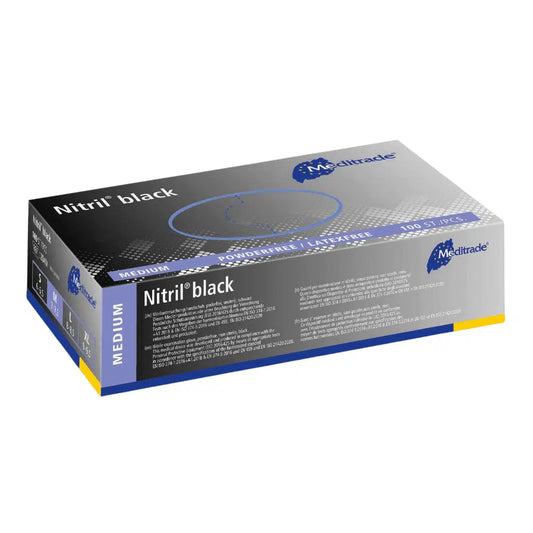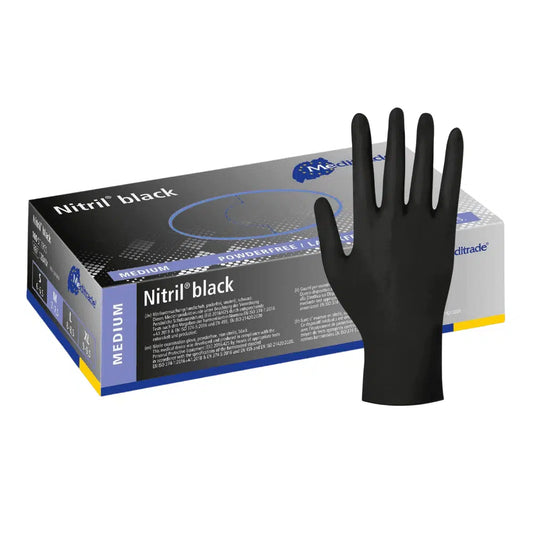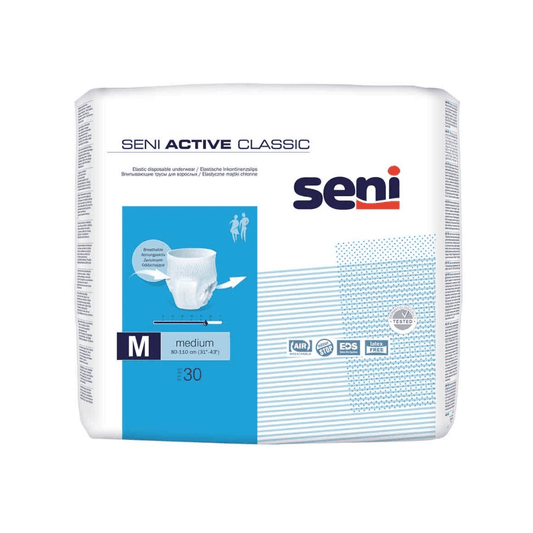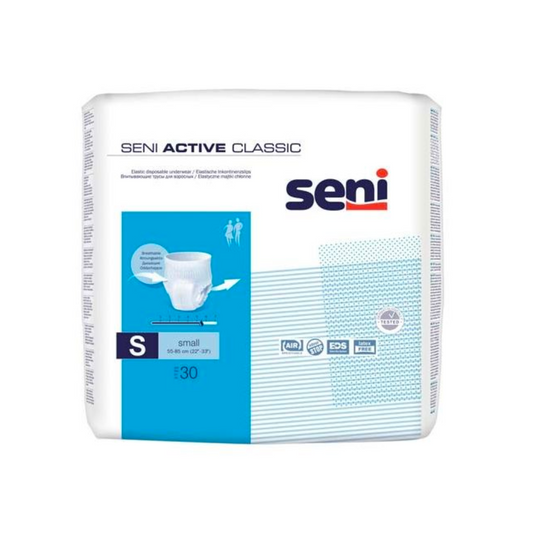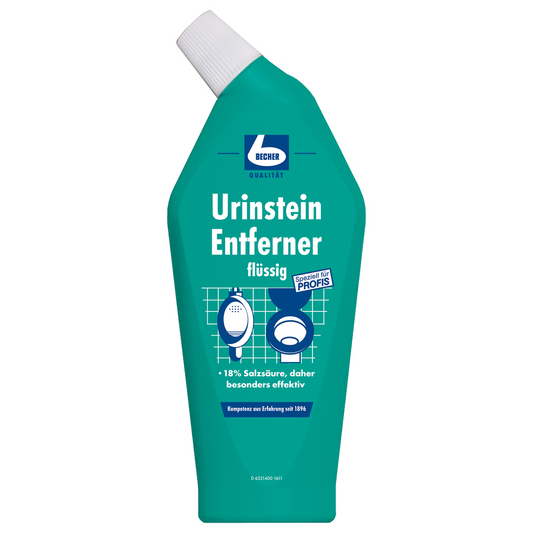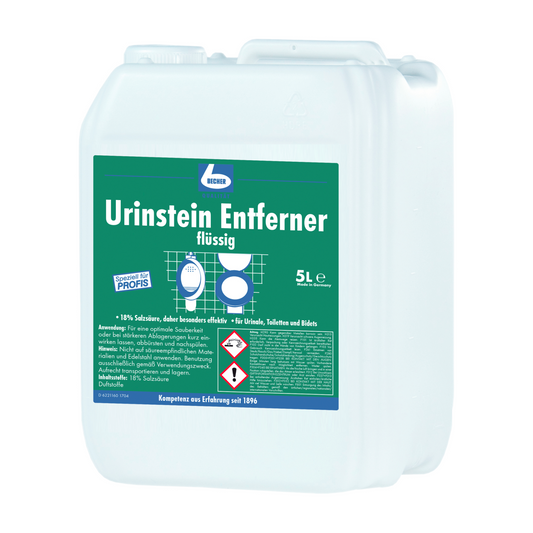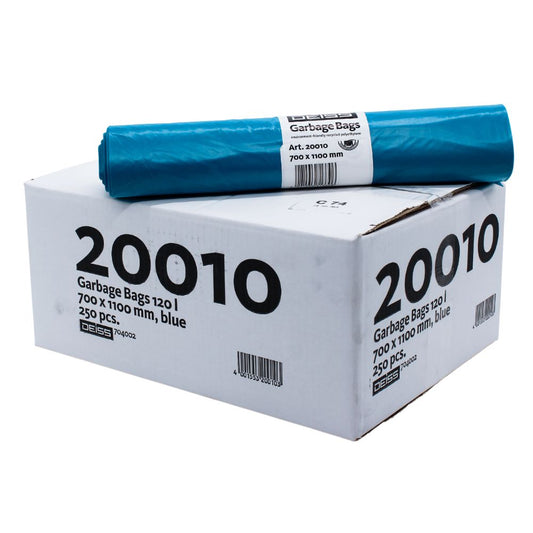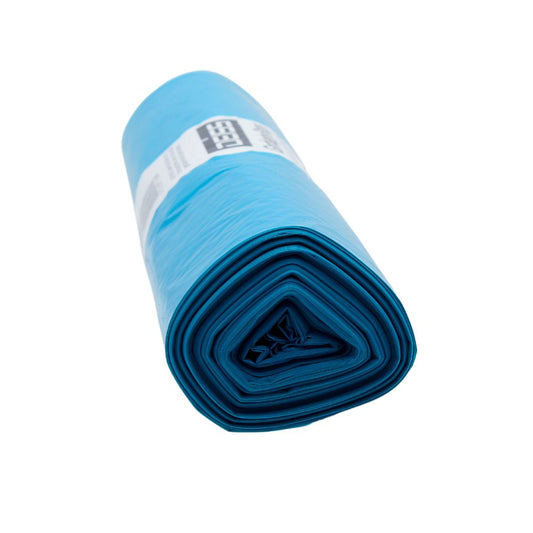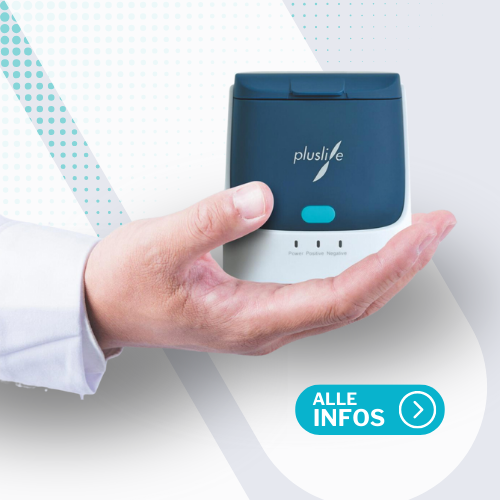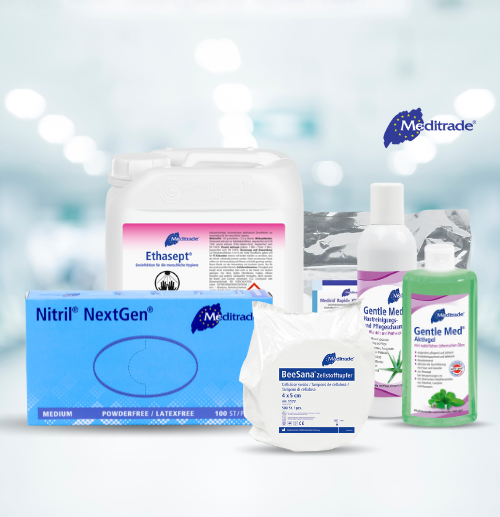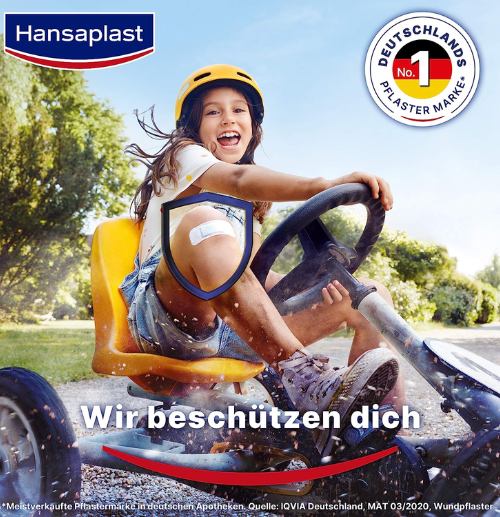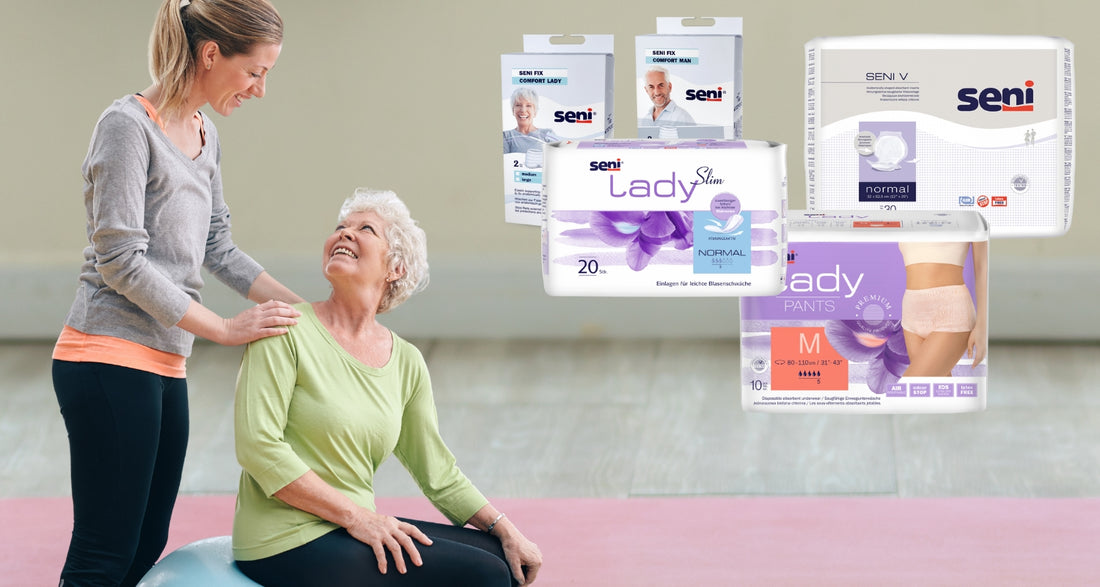
Incontinence in adults - causes, coping and aids
Harn incontinence is a common and often underestimated problem that affects many adults. Despite its spread, it is often not adequately addressed out of shame or ignorance.
In this blog post, we would like to talk about urinary incontinence in adults, their causes, strategies for coping with and the aids that can help those affected to live an active and fulfilling life.
Definition of incontinence:
Incontinence describes the loss of the ability to deliberately control urine or chair, which leads to unwanted loss of urine or stool. Incontinence affects people around the world, regardless of gender, age or social status. It can affect people in any age, from children to older adults. However, the risk of incontinence increases with age. Older people are particularly affected because the natural aging process and age -related changes in the body can affect the bladder control. Statistics show that around 30% of over 70 years of incontinence are affected.
Incontinence can be a significant impairment of the quality of life, but there are many treatment options and aids that can help those affected to deal with symptoms and to live an active life. It is important that those affected are looking for medical help in order to identify the causes of their incontinence and take suitable treatment measures.
The causes of incontinence
Incontinence, be it urinary or stool incontinence, can be caused by a variety of factors. In urinary incontinence, age -related changes play an important role, since the bladder capacity decreases with age and the bladder muscles become weaker. Women after birth and men after prostate operations are often affected. Neurological diseases such as Parkinson's, multiple sclerosis or stroke can also affect control over the bladder.
Bladder stones, urinary tract infections and certain medication can be additional causes. Stool incontinence, on the other hand, can be caused by chronic constipation, damage to the anal sphincter, inflammatory bowel diseases or intestinal surgery. The exact cause is crucial for the choice of therapy, which a doctor should determine individually.
Incontinence and their symptoms
The symptoms of incontinence can vary depending on the type and cause. In urinary incontinence, this problem often manifests itself through uncontrolled urinary loss when coughing, sneezing or laugh (stress incontinence), a strong, sudden urge to urinate with immediate loss of urine, even before the toilet can be achieved (urge incontinence), or through a continuous or periodic loss without warning ( Overflow incontinence). Affected people can also experience frequent urge to urinate, frequent at night and feel that they cannot completely empty the bladder. Stool incontinence is shown in uncontrolled stool output that can occur independently of time and place.
Recognize the first sign of incontinence: Notes for relatives
Incontinence can develop slowly and first become noticeable through subtle signs. Relatives can consider the following information in order to recognize possible signs of incontinence from their loved ones:
-
Increased toilet: If someone suddenly visits the toilet more frequently than usual or wakes up several times at night to leave water, this can be an indication of an beginning urinary incontinence.
-
Sudden changes in mood: Sometimes changes in behavior, such as increased irritability, fear or depression, can occur due to incontinence. This can indicate that the person concerned suffers from emotional stress due to their incontinence.
-
Unplanned change of clothing: If relatives find out that their loved ones have to change clothes more often than usual or that the laundry has increased stains, this could indicate unwanted urine or stool loss.
-
Unusual smells or spots in the living area: The presence of unusual smells in the living area or the occurrence of stains on furniture or carpets can be a sign that the person concerned has difficulty checking their bladder or intestine.
-
Avoiding certain activities: People with incontinence sometimes tend to avoid social activities where they fear that their incontinence could become a problem. The withdrawal of such activities can be an indication that the person concerned suffers from incontinence.
The recognition of these signs can help offer support at an early stage and to support the person concerned in the search for adequate medical treatment. It is important to be sensitive and supportive when talking about incontinence in order to help the data subject not feel left alone.
Different forms of incontinence
Load incontinence: This type of incontinence occurs when pressure is exerted on the bladder, for example when coughing, sneezing, laughing or heavy lifting. In the event of stress incontinence, an unwanted loss of urine can occur, especially if the pelvic floor muscles are weakened.
Drang incontinence: People with urge incontinence suddenly and intensively feel the urge to empty the bladder and cannot control the urine in time to reach the toilet. This strong urge to urinate often occurs without warning and can lead to unwanted loss of urine.
Overflow incontinence: In the event of overflow incontinence, the bladder is not able to completely empty, which can lead to continuous or periodic loss of urine. This can occur due to bladder emptying disorders or a disturbed bladder function.
Functional incontinence: This form of incontinence occurs when a person is unable to reach the toilet in good time due to physical or mental impairments, such as severe arthritis or dementia, even though they actually have control over their bladder.
Stool incontinence: Stool incontinence refers to the unwanted loss of chair. This can be caused by various causes such as chronic constipation, damage to the anal sphincter or the anorectal area, inflammatory bowel diseases or intestinal surgery.
Risk factors for incontinence
With increasing age, the risk of incontinence increases, since the muscles and tissues that are important for bladder control can become weaker over time. Women have a higher risk of incontinence than men due to pregnancy, birth and menopause. Pregnancy and birth can affect the pelvic floor muscles and bladder control, which can lead to an increased susceptibility to incontinence.
Obesity and obesity increase the pressure on the bladder and can increase the risk of incontinence, as well as smoking, which can increase the cough reflex and increase pressure on the bladder. Certain chronic diseases such as diabetes, Parkinson's disease, multiple sclerosis and stroke can affect the bladder function and increase the risk of incontinence. Some medications, especially those that influence the bladder function, can also increase the risk of incontinence. Previous operations in the pelvic area can also affect the bladder control and increase the risk of incontinence.
Medicines and incontinence: A look at potential triggers
Incontinence can be triggered or worsened by taking certain medication. Here are some types of medication that can influence the bladder function and increase the risk of incontinence:
-
Diuretics (water tablets): Diuretics are often used to treat high blood pressure and other diseases. They promote the excretion of liquid and can lead to the bladder fills faster and must be emptied more often, which can lead to increased urge to urinate and possibly to urinary incontinence.
-
ACE inhibitor: ACE inhibitors are used to treat high blood pressure, heart failure and other cardiovascular diseases. In some people you can lead to a dry cough that can increase the pressure on the bladder and lead to a deterioration in the bladder control.
-
Betar receptor blocker: Betar receptor blockers are used to treat high blood pressure, cardiac arrhythmias and other cardiovascular diseases. You can relax the bladder muscles and lead to increased urge to urinate or uncontrolled loss of urine.
-
Cholinesterase inhibitor: Cholinesterase inhibitors are used to treat Alzheimer's disease and other forms of dementia. You can influence the bladder function and lead to increased urge to urinate or uncontrolled loss of urine.
Suction tools for incontinence: an overview
Incontinence inserts: These thin, absorbent inserts can be placed discreetly in underwear in order to manage light to medium -sized urinary incontinence. They offer additional protection and comfort and are particularly practical for daily use.
Incontinence templates: Templates are similar to deposits, but larger and offer a higher suction capacity. They are ideal for people with medium to severe urinary and stool incontinence and offer reliable protection against unwanted loss of urine.
Incontinence pants: These pants resemble conventional underwear and offer discrete protection against urinary incontinence. They are particularly suitable for people with mild to medium incontinence and offer freedom of movement and comfort.
Incontinence pants: These specially designed trousers offer safe seat and additional protection against urinary incontinence. They are particularly suitable for people with medium to severe urinary and stool incontinence and offer comfort and security all day.
Incontinence templates with hip federation: These templates are equipped with an elastic hip federation that ensures safe fixation and prevents slipping. They are ideal for people with medium to severe incontinence who need additional security and protection.
Bed protection documents: These waterproof documents are placed on the bed or e.g. wheelchairs and armchairs to protect mattresses and bed linen from unwanted loss of urine. They are particularly suitable for the nightly use and offer reliable protection during sleep.
Incontinence aid: more than just protection - an improvement in quality of life
Incontinence aids play a crucial role in coping with this challenge and offer numerous advantages for those affected. By reliable protection against unwanted urinary or stool loss, you convey a feeling of security and security. In addition, they enable affected people an active and self -determined life without constantly having to think about possible accidents or embarrassing situations.
Modern incontinence aids are discreet and inconspicuous, so that they are hardly visible under the clothing and do not affect the comfort. This enables those affected to move freely and carefree. In addition, incontinence aids contribute to preventing skin irritation and infections in the field of genitals and facilitating people make everyday life easier by enabling them to continue their daily activities without restrictions or interruptions. Overall, incontinence aids improve the quality of life of data subjects by offering them the necessary support, security and comfort in order to make everyday life self -determined and dignified.
